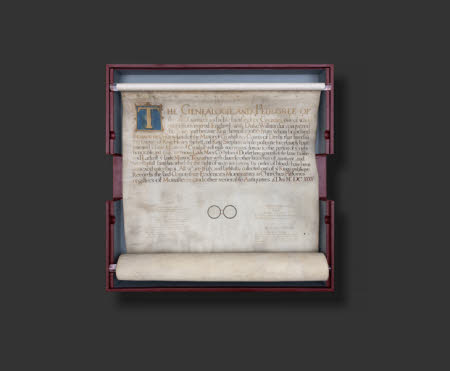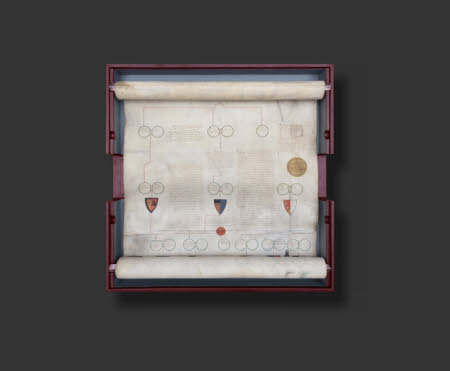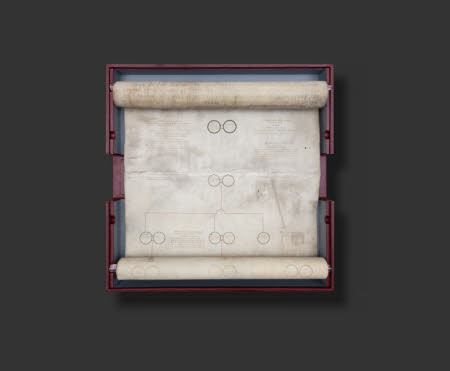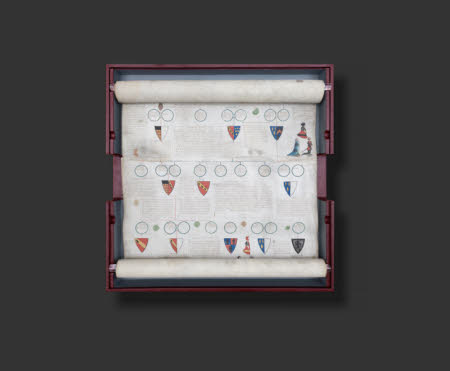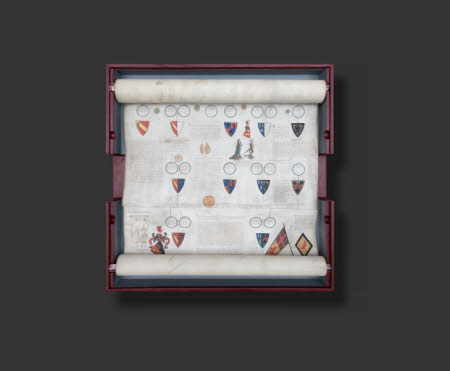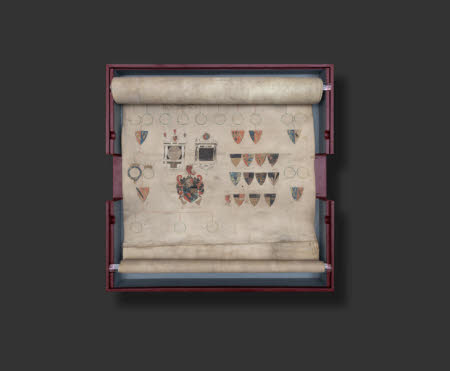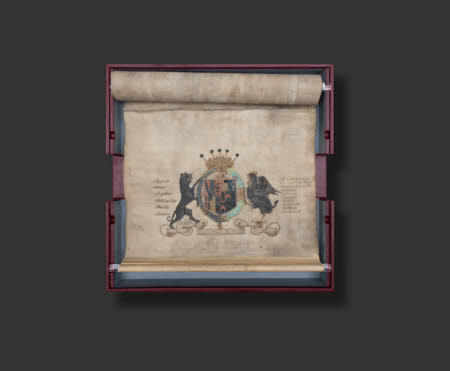Family pedigree
Category
Manuscripts and documents
Date
c. 1635
Materials
Parchment
Measurements
1790 x 1460 x 425 mm
Order this imageCollection
Knole, Kent
NT 132291
Summary
An illuminated pedigree, or family tree, made for Mary Curzon (1586-1645) and Edward Sackville (1590-1652) in about 1635. The pedigree is illustrated on parchment in black and coloured ink, as well as gold and silver paint. The pedigree begins with a paragraph introducing the Curzon family’s origins in 1066. The table, or tree, then sets out the Curzon genealogy from 1066 to 1635. The document includes illustrations and quotations taken from various sources, including: historical records, church windows and legal documents. .
Full description
This pedigree, or family tree, records the lineage for Mary Curzon (1586-1645), who married Edward Sackville, 4th Earl of Dorset (1590-1652) and heir to Knole. The Curzon pedigree is on parchment which would have been an expensive material in the 17th century. Several sheets of parchment have been joined together to make the roll long enough to represent the entire family tree. The details and coat of arms were illustrated in coloured ink and silver paint. The inclusion of silver paint indicates that this was an expensive and high-status pedigree. The silver paint has oxidised and now largely appears black but there are some areas where the colour is still visible. Early pedigree rolls in Britain were a simple way to represent biblical genealogies and royal lineage. The early royal pedigrees were like propaganda and sometimes complex and contentious details were omitted. By the 15th century wealthy noble families started to commission these artworks to beautifully record their family tree. Recording a pedigree on a roll, rather than in the leaves of a book, was an easy way to display complex histories in a visually impressive way. At Knole, the Curzon pedigree was displayed in the Leicester Gallery in the 19th century before being removed from display around 1940. The makers of the Curzon pedigree are unknown. However, it would have taken great skill and patience to research, compile and illustrate a pedigree of this scale and complexity. By the end of the 16th century there were numerous arms-painters’ shops in London where wealthy families could commission their family pedigree. Family pedigrees often included illustrations copied from portraits, supporting documents and occasionally architectural details. For example, Knole’s Curzon pedigree includes copies of stained-glass windows in a Croxhall church in Derbyshire. There are a few possible reasons that Mary and Edward Sackville might have commissioned their elaborate pedigree. Commissioning a pedigree was a way to visually represent the status and power of your family. It is likely that Edward Sackville and Mary Curzon would have enjoyed the grand visual representation of their children’s lineage. Another possible motivation for commissioning the pedigree might have been Mary Curzon’s involvement in a dispute about the inherited wealth and land belonging to her cousin Sir Richard Leveson (1570-1605). Mary believed that she was entitled to Sir Richard’s estate as he died without any children in 1605. However, Richard had left a will transferring his wealth to his godson, which Mary Curzon and her family challenged. The Curzon pedigree includes a number of references to Mary as the legal heir to Richard Leveson’s wealth.
